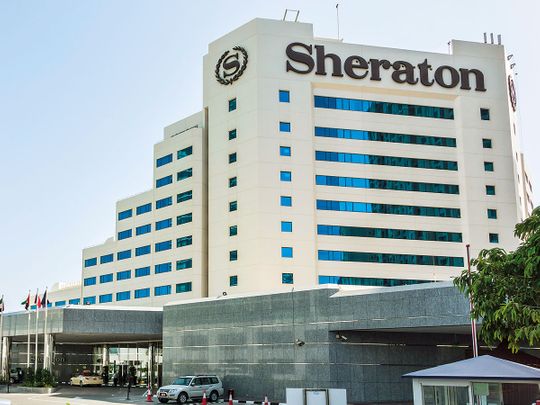
Dubai: Since its $13.6 billion (Dh49.95 billion) acquisition of Starwood Hotels and Resorts in 2016, Marriott International has primarily focused on two things: The introduction of its new loyalty programme, and the rejuvenation of one of Startwood’s most important brands: Sheraton Hotels.
That is according to Indy Adenaw, vice-president and global brand leader of Sheraton.
Almost two years into the company’s transformation strategy, Adenaw said that it was one Marriott’s “biggest priorities next to the roll out of its merged loyalty programme, Bonvoy.”

Some of these iconic hotels, just given how much history and heritage they’ve had, have not had renovations in a number of years.
By 2018, 25 per cent of the owners of Sheraton hotels had pledged to spend about $500 million on renovations of hotels across the US.
Speaking to Gulf News recently, the senior executive described in detail plans for hotel renovations and what would happen to the number of Sheratons dotted across the Middle East.
“This has been a journey of firsts in some ways,” he said, adding: “This has been the first brand that we have gone through an international reinvigoration journey with.”
75
Number of countries where the Sheraton brand is presentSheraton is Marriott’s most global brand, maintaining a presence in some 75 countries. It is one of largest brands within the combined Marriott International and Starwood portfolio, which in itself became the largest hotel company in the world after its merger in 2016.
Describing the process, Adenaw said that he had sat down with general managers, hotel owners, and partners to “figure out what’s at the heart of Sheraton, and understand what we can do as a company to reinvigorate it.”
‘World’s gathering place’
He said that after extensive consultations, the company decided that Sheraton hotels would be underpinned by the theme of community, and being “the world’s gathering place.”
“We’ve been trying to really rally around that positioning, and make it tangible through new designs, operations, and new service and culture platforms,” Adenaw said.
“We’ve touched every part of Sheraton while staying true to its roots.”
The decision to begin renovating Sheraton began almost immediately after the merger in 2016, he said, after owners began contacting the team to tell them the brand “needed more attention and love.”
15
Number of properties under the Sheraton brand in Middle EastIn the Middle East, Sheraton operates 15 properties, including six in the UAE. The Sheraton in Cairo has been open since the 1960s, making it one of the hotel’s first international properties.
“Sheraton has a special place in Middle Eastern communities,” Adenaw said. “I have to say the history of Sheraton in this region really rivals any other region.”
“Some of these iconic hotels, just given how much history and heritage they’ve had, have not had renovations in a number of years,” he said. “Now we’re starting to see renovations in those hotels.”
A large-scale renovation is currently underway at the Sheraton Jeddah, with subsequent work planned for the Sheraton Kuwait City.
The Sheraton Grand Dubai has already undergone renovation.
While the hotel brand’s history in the region “is bar none,” Adenaw said, the hotels themselves still “have a little bit more to go.”
“But we think we’re well on our way,” he added. The company plans to renovate all of its hotels in the region over the next three to five years.
This was only possible with the cooperation of the hotels’ owners. Adenaw described his conversations with these investors around the world as “healthy.”
“I think that we have actually found that the vast majority of our owners have really fallen in love with the future... of Sheraton.”
The company has so far seen 22 exits from the brand, meaning that two dozen hotels will no longer carry the Sheraton brand name, often the result of a difference of opinion on whether the hotel requires further investment from the owner or not.
The vast majority of these exits have been in the US and Europe, typically because the hotels “tended to be in more tertiary locations that couldn’t support the business model that [we were] asking them to do,” Adenaw said.
In many parts of the world, including the Middle East and Africa, he said, the tone of “our conversation has been how and when we approach the renovations, not whether we exit them.”
“It’s been quite healthy in that nature.”
The company has just under 30 per cent of its hotels currently going through renovation, or just approaching renovation.
Adenaw said the aim was to renovate 100 per cent of Sheraton’s hotels globally in the coming years.












